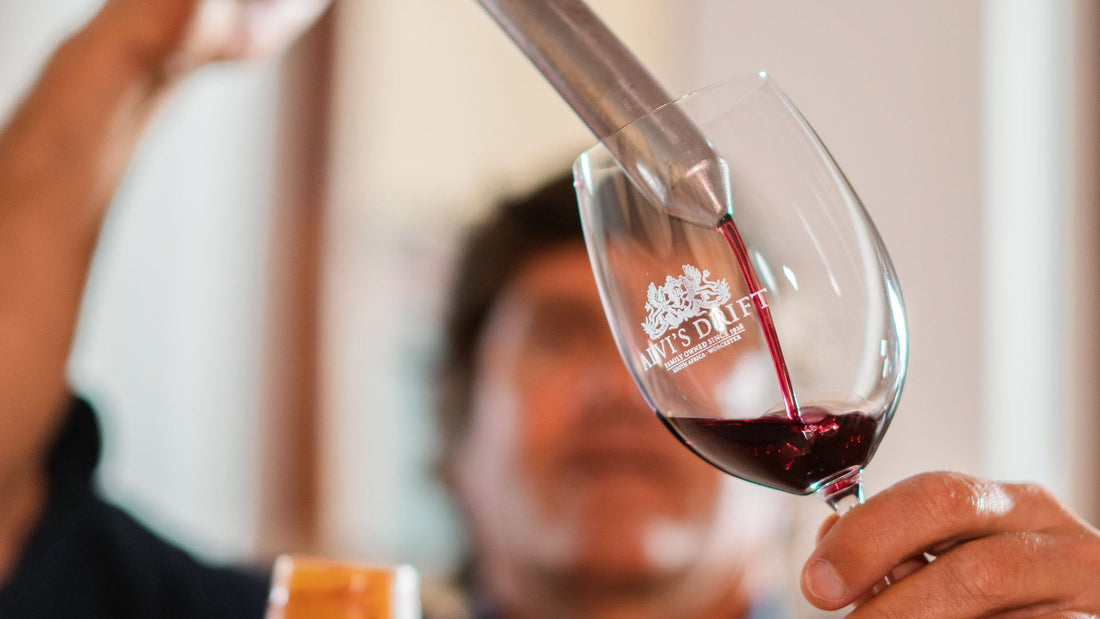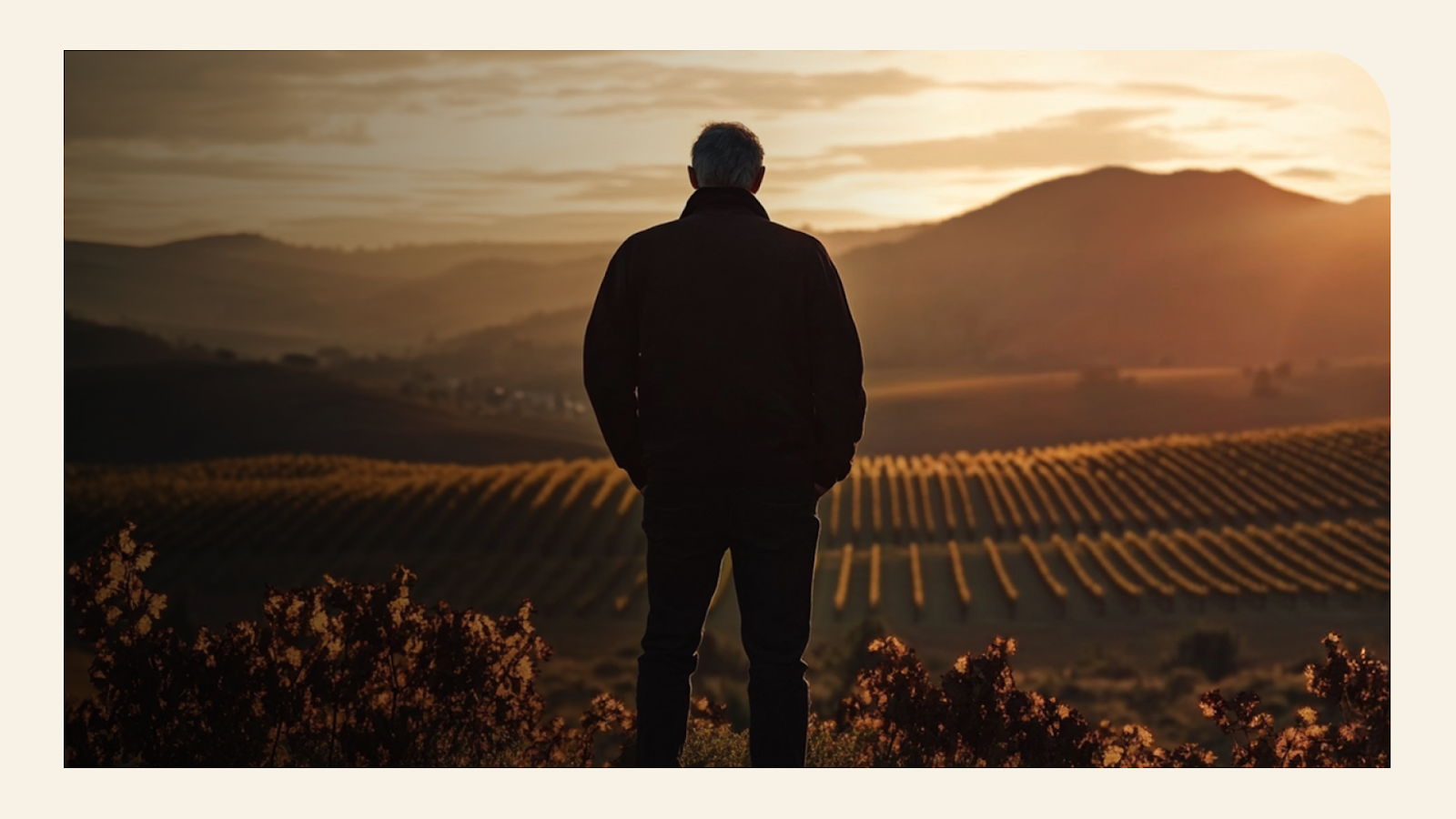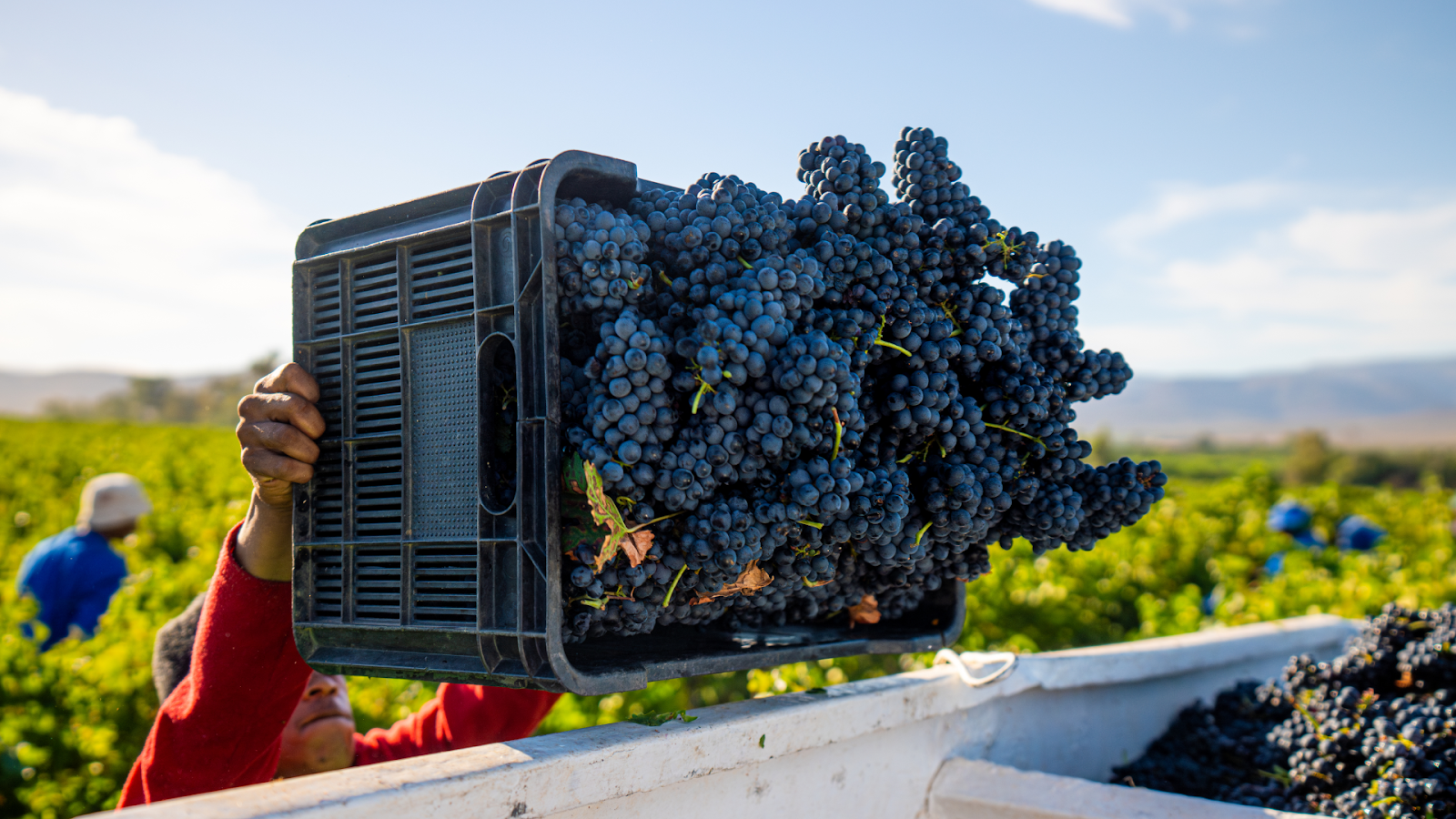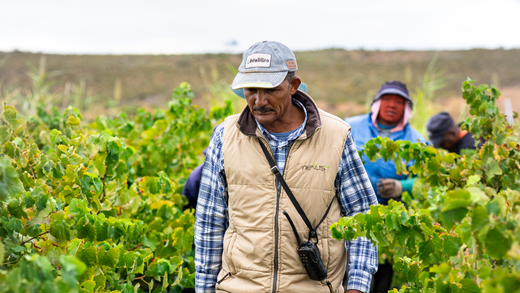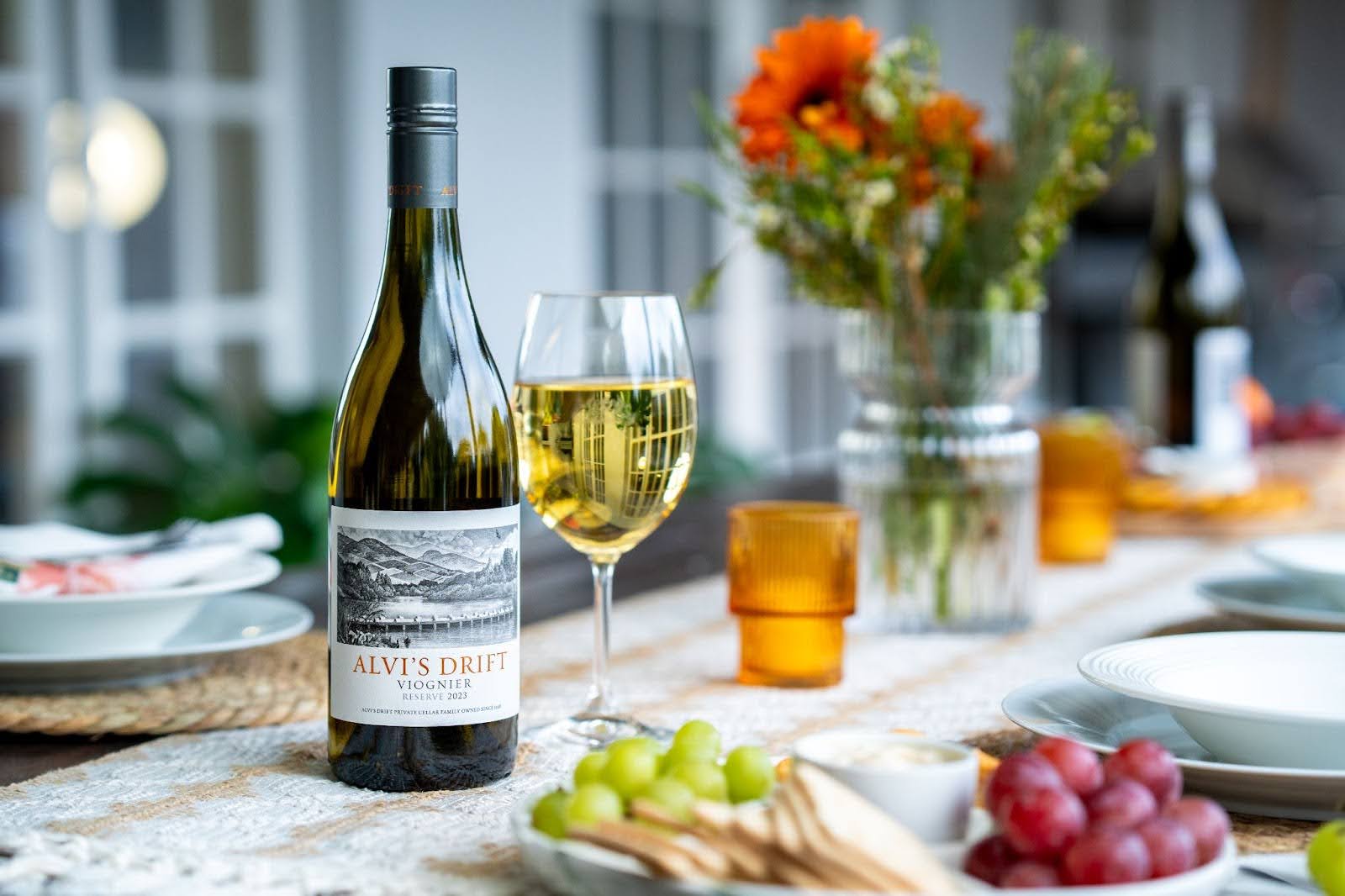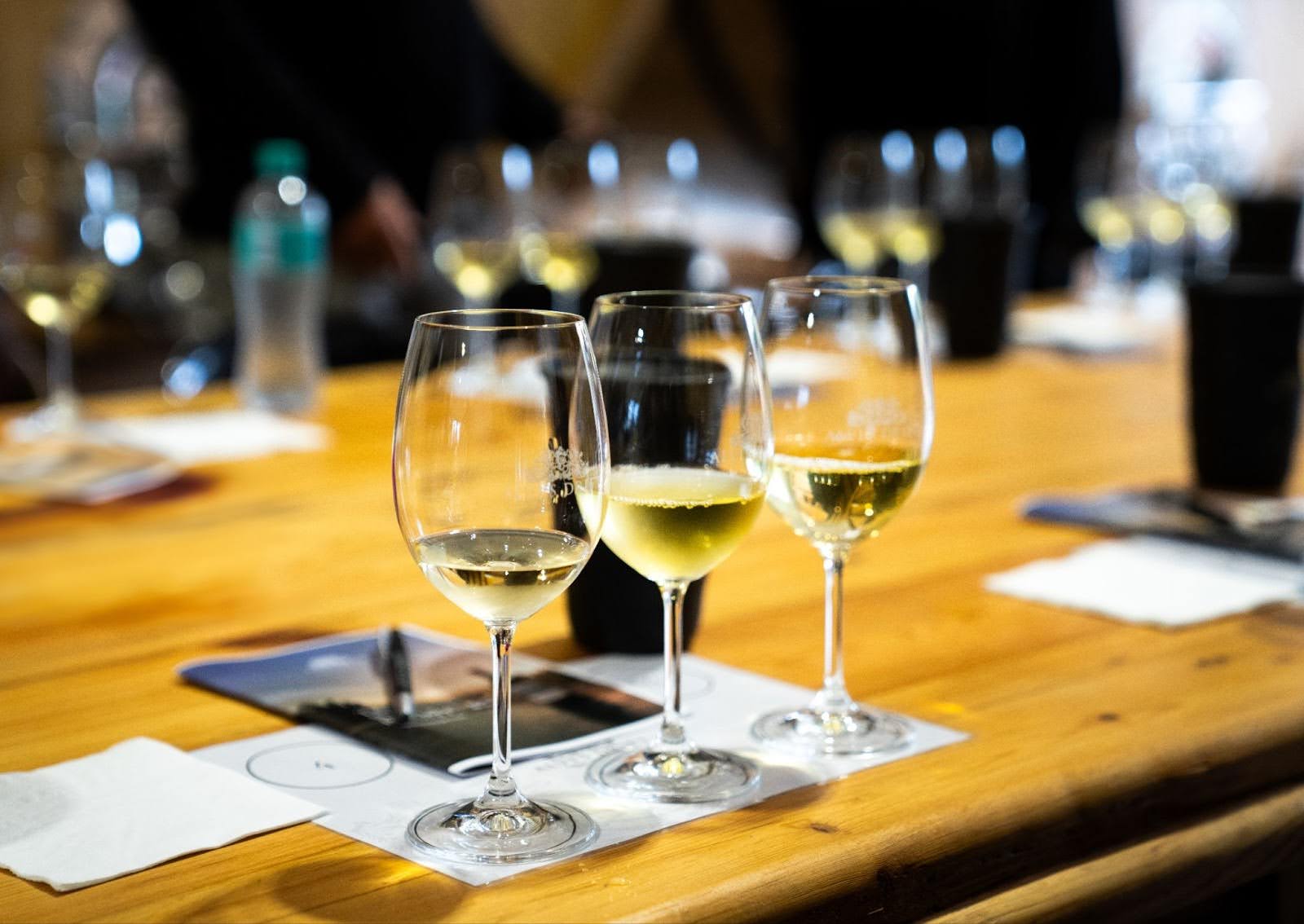Over the decades, wine blends have steadily increased in popularity – among wine lovers and winemakers alike. Although some people may have the perception that wine blends are inferior in quality, in reality, just about all wines are blends of some sort.
Certain wines might be blends created from different vineyards on a wine farm, from various barrels or from different vineyard blocks of single cultivars. While other wines may be blends from various cultivars or appellations.
In this article, we explore the history of wine blends and different approaches to the art. We also compare wine blends with single-cultivar wines, and look at a few world-famous blends.

Wine Blends: An Interesting History
In days of yore, winegrowers would often replace dead vines in their vineyards with other grape cultivars. Over time, vineyards would become planted with various cultivars and farmers would eventually no longer know which vine produced which cultivar.
All grapes in such a vineyard would then be harvested simultaneously to be fermented together, with the resulting wine inevitably a blend. This type of blend is called a field or vineyard blend, as the various grapes were already blended in the vineyards, before being vinified in a cellar to become a wine blend.
Today, winemakers employ different vinification techniques and approaches to the art of wine blending. One thing they all agree on? Blending wine offers them lots of opportunities to flex those creative winemaking muscles.
“As winemakers, creating wine blends allows us to be really creative in our work. At Alvi’s Drift, all our wines are superior, including our single-cultivar wines. But when blending wines, we get to add the various flavours and characteristics of each wine to the mix, which is very exciting,” says Riaan Marais, Alvi’s Drift Cellar Master.
Single-cultivar Wines Versus Wine Blends
Both wine blends and single-cultivar wines have their merits. Single-cultivar wines make it easy to gain an understanding of each cultivar’s unique characteristics. Wine created from just one grape cultivar also makes it easier to see how terroir (which includes soil and climate) and vinification techniques affect the final result.
It is generally accepted that winemakers blend wines to create something that, as a whole, is greater than the sum of its parts. For example, in a red Bordeaux blend, Cabernet Sauvignon can be somewhat harsh, particularly when it is still young. However, blending Cabernet Sauvignon with Merlot can result in a wine with a rounder mouthfeel and a mellower structure.
Old World Versus New World Wine Blends
Wine regions situated in the Old World are bound by strict regulations that limit the possibilities for blending. However, in the New World (this includes North America, Australia, New Zealand, South America and South Africa) regulations are few and far between, allowing winemakers to experiment to their hearts’ content.
South Africa in particular has gained a reputation for being exceptionally creative and innovative when it comes to wine blends, with white wine blends from Chenin Blanc, Chardonnay and Viognier gaining popularity across the globe in the last decades.
Interestingly, in the New World, certain wines stating just one cultivar on its label may in fact consist of a small percentage of other grape varieties. For example, in the United States a wine may be labelled as a single-cultivar wine if it consists of at least 75% of a grape varietal. In Australia and South Africa, the minimum amount is 85%.
“Creating a wine blend is like building a puzzle. You only see the full picture at the end. You pick your building blocks, and then you start tasting,” explains Riaan.
A simplified way of looking at wine blends versus single-cultivar wines is that blended wines display the skill of the winemakers, whereas single-cultivar wines are all about the unique expression of the varietal in question. Which type of wine you prefer is therefore simply a matter of taste and preference.

Different Approaches to Wine Blending
Approaches to wine blending can differ vastly, with some winemakers spending several hours perfecting a wine blend, while others could take days, weeks or even months to do so.
The creation of a blended wine depends on many factors, some of which may include the winery’s size, the winemaker’s approach, as well as the vintage of the wine. Whatever their approach, when creating wine blends, winemakers go on an intricate journey of evaluating numerous wines and blending possibilities.
Often, winemakers will kick off by creating what is called a “base blend”, which will comprise the wine’s foundation. They also often start by blending in larger percentages of wine, then proceeding to smaller percentages, tasting and evaluating as they go along.
When they get closer to reaching their goal for the particular wine blend, they might focus on tweaking only one or two percent of a wine blend. When a final blend has been achieved, individual barrels are combined into a blending tank, before they are typically returned to oak barrels for further maturation and, ultimately, bottling.
When Does the Blending Process Start?
When exactly a winemaker decides to start blending wine varies from individual to individual. Some winemakers like to start the blending process immediately after fermentation has been completed, while others prefer to ferment, then mature wines for many months before commencing the blending process.
Let’s explore the various stages at which a winemaker can start the blending process.
In the vineyard
Also known as a field blend, so-called vineyard blends are created when a vineyard that comprises various blocks with different grape cultivars is harvested as a whole. Grapes are then vinified together to produce a vineyard or field blend.
Before completion of malolactic fermentation
Another possible stage at which wine blends can be created is as soon as possible after completion of alcoholic fermentation – but before malolactic fermentation (MLF) is completed.
This allows for sufficient time to integrate the various blending components. Another advantage of blending at this stage is the micro-biological stabilisation and maturation of the blend as a whole. Winemakers who choose to commence blending at this stage must be capable of predicting the results of such a blend after bottling.
After finishing of the various wine blend components
The final stage at which you can commence wine blending is after finishing of the wine’s various components prior to mixing. That said, it is always preferable to stabilise the final blend, rather than the different components, as the blend cannot be guaranteed to be stable, even if the various components are stable themselves.
Blends created following this process are known as bottling blends, as stabilisation and final filtration before bottling are the only vinification processes applied to the blend.
As a consequence, it is easier to predict the bottling blend’s end result.
Four World-famous Wine Blends
Many of the world’s most celebrated wines are created from a blend of several grape cultivars. Let’s take a closer look at four of today’s most famous and popular wine blends.
Bordeaux blend: red and white
Usually, a Bordeaux red blend comprises two or more of the classic Bordeaux cultivars – Cabernet Sauvignon, Merlot, Cabernet Franc, Malbec, Petit Verdot and Carmenère. Bordeaux red blends are earthy, medium- to full-bodied wines that boast forthcoming aromas of blackcurrant and plum, with flavours ranging from tart to sweeter, ripened fruit.
A white Bordeaux blend would most likely include at least two of the following cultivars: Sauvignon Blanc, Semillon, Muscadelle and Sauvignon Gris. In a white Bordeaux blend, the Sauvignon Blanc wine component lends its signature grassy aromas, while Semillon adds some complexity with waxy notes and aromas of honey.
It is important to note that “Bordeaux blend” is simply a term to describe the grape cultivars used to create the blend. There are no set rules regarding the percentages in the final wine blend or in the yields when growing, nor are there any planting regulations to adhere to in France’s Bordeaux region.
Rhône blend
Rhône-style red blends are blended wines created from grape cultivars originating from the Rhône Valley in France. Typically, these blended red wines are created using Shiraz, Grenache, Mourvèdre, Cinsaut and Carignan grapes, but other secondary grape cultivars may also be used.
Red Rhône wine blends made with Shiraz are often big, bold, spicy wines that display a firm tannic structure when young. Boasting excellent ageing potential, red Rhône blends display peppery aromatics while featuring characteristic aromas of smokiness and minerality, with notes of blackberry and raspberry.
Champagne blend
One of the most distinctive wine styles in the world, the term “Champagne blend” refers to the natural-method sparkling wines created from Chardonnay, Pinot Noir and Pinot Meunier. Sparkling wines created from these cultivars are most notably associated with northern France’s Champagne region.
A single-appellation d'origine contrôlée, Champagne in France is the birthplace of natural-method sparkling wine. To create a Champagne blend (called Cap Classique in South Africa) grapes used have to be Chardonnay (a white grape) and either Pinot Noir (a dark-skinned “red wine grape”) or Pinot Meunier.
Although they are red grapes, as a result of gentle pressing and no skin contact during fermentation, both Pinot Noir and Pinot Meunier grape cultivars usually yield a white base wine.
Cape blend
A truly South African red wine blend, what defines a Cape blend is a minimum of 30% and a maximum of 70% Pinotage wine. Cape blends often also contain varying percentages of the cultivars Cabernet Sauvignon, Merlot and Shiraz.
Generally speaking, the consensus seems to be that a Cape blend should be a well-balanced wine that displays a distinctive South African personality, lots of character and appeal, as well as excellent maturation potential.

Alvi’s Drift Wine Blends
At Alvi’s Drift, our passionate winemaking team spends months on end experimenting, tasting and deliberating to come up with our superb red and white wine blends.
“Knowing what you have to work with in your vineyards is essential. You need to know where to find the characters, fragrances, and tannins you want to have present in your final blend. As a winemaker, Alvi is extremely particular. He knows exactly what he is looking for,” explains Riaan.
Below, we offer some insights into what goes on behind-the-scenes when it comes to the creation of Alvi’s Drift’s award-winning wine blends.
Alvi’s Drift Albertus Viljoen Bismarck Red Blend
Shiraz 41% | Cabernet 21% | Pinotage 15% | Grenache 9% | Petit Verdot 6% | Alicante Bouschet 4% | Viognier 4%
This beautifully opulent, robust wine is complex on the nose with layers of fragrant spice. Full-bodied yet elegant, it boasts great complexity, exhibiting deep, dark black fruit, ripe mulberry, blackberry, vanilla and just a hint of white pepper. Well-integrated, firm tannins provide wonderful structure, suggesting longer maturation potential, with a beautiful, long and lingering finish. This wine has maturation potential of at least eight to 10 years.
“Viognier is a very unique white wine cultivar. In this Rhône blend, the spiciness of the Shiraz is enhanced by the spiciness of the Viognier. One would think that a Viognier, being a white wine, will dilute the final red blend’s colour,” says Riaan. “Viognier is so unique that, as a white wine, it enhances the blend’s spiciness and character, yet doesn’t dilute the characters or colour within the red wine blend.”
Read more about this multi-award-winning Alvi’s Drift red wine blend here.
Alvi’s Drift Reserve Drift Fusion Red Blend
Pinotage 41% | Cabernet Sauvignon 39% | Shiraz 9% | Durif 5.5% | Petit Verdot 5.5%
This Cape blend is led by Pinotage, backed by Cabernet Sauvignon, and literally a fusion of old and new. Not just of grapes and styles of wine, but also of vinification techniques, with each cultivar vinified separately to showcase its specific characters.
This complex, sumptuous wine boasts intense aromas of ripe blackberry, plum and cherry, with beautifully integrated spice, vanilla and cashew nut characters. Well- balanced with a firm, well-integrated tannin structure, this full-bodied wine has a fruit-driven, lingering finish and a maturation potential of at least five to eight years.
“This is a really big wine for our winery, it’s just so popular among the people who love our wines. As a Cape Blend, our Reserve Drift Fusion is predominantly Pinotage-driven. So you get those floral flavours coming through,” says Riaan. “It’s quite a soft wine, and we use predominantly American oak for maturation, adding more candy floss aromas and sweet enhancers to the wine.”
Read more about this multi-award-winning Alvi’s Drift red wine blend here.
Alvi’s Drift Reserve CVC White Blend
Chenin Blanc 67% | Viognier 17% | Chardonnay 16%
Striking pale-lemon in colour, this Chenin Blanc/Viognier/Chardonnay white wine blend has a complex nose and a lovely brilliance, offering aromas of stewed quince, peach, hazelnuts, honeysuckle and subtle hints of butterscotch. This white wine blend boasts a structured, well-rounded palate, extremely well-balanced tannins and acids, with fruit following through with great length to a memorable finish.
“Our Reserve CVC is a very interesting blend with remarkable components that just make it such a beautiful wine,” says Riaan. “Firstly, ours is not your typical ‘tropical-fruit flavours’ Chenin Blanc wine. Our Chenin Blanc has more honey blossom and floral notes. The Viognier component brings that spiciness, while the Chardonnay provides the wood and the creaminess at the back. This is just a beautiful, beautiful wine.”
Read more about this multi-award-winning Alvi’s Drift white wine blend here.
Explore More Alvi’s Drift Wine Blends
Learn more about our winery’s award-winning red, white and sparkling wine blends here. Then visit our online shop and get your favourite Alvi’s Drift wines delivered directly to your doorstep.
